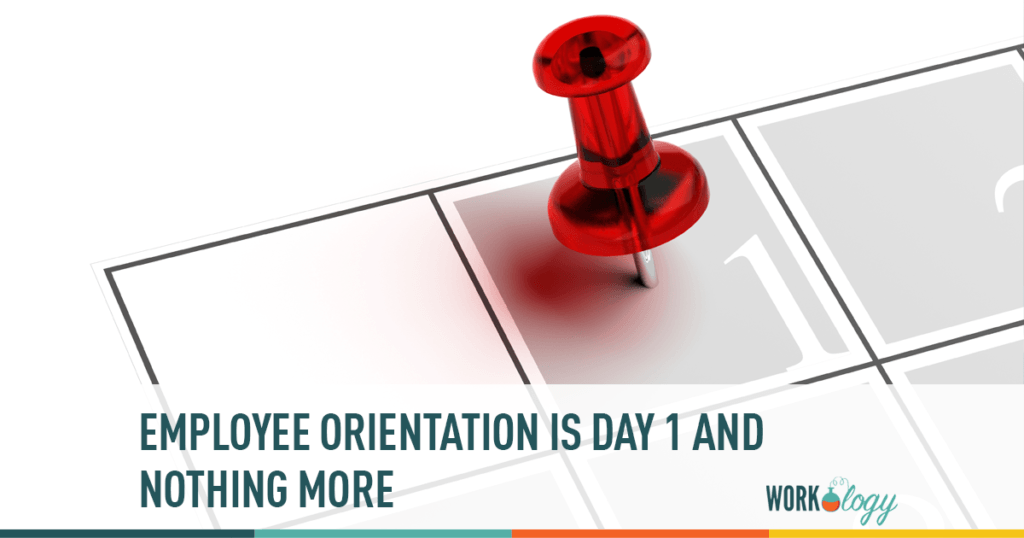Not too long ago Shelly Wallace Johnson wrote a great post on on-boarding. Today, I’d like to focus on one piece of employee onboarding, orientation. Orientation. It’s the worst day of your job, right? Employee orientation brings forth memories of boring policies and procedures, filling out payroll paperwork, your new hires sitting in a room watching PowerPoint after PowerPoint on all this stuff they HAVE to know so we might as well tell them everything on their first day so we can check it off our list.
Employee Orientation Is Day One and Nothing More
But does employee orientation need to really be that way? I know there are a lot of boring things we need to cover in that first day but can’t we do it a little differently? And maybe even make it memorable?
I think employee orientation starts long before that day one. I like to call this “Pre-boarding.” From the moment you post that job, every application you review, every applicant you meet and consider, each of those touchpoints should be considered part of pre-boarding, where you are not only selecting someone to be a part of the team, but they are also selecting you. You need to use this time to start selling the candidate on your culture. Take time to communicate with the candidate throughout the process so they know what’s going on, to help them make the decision to join you if you decide you want them to.
Orientation is Day One
Day one is where you need to shine. It’s their official welcome to your organization, your department and sets the tone for the rest of their employment with you. You want them to remember this day, with a smile. Look at what you need to cover on that first day and decide what absolutely must be covered during that time and what can you do differently. Can you do your new hire paper and payroll paperwork electronically? Are there other documents you can send prior to that first day for them to review? If you want to ensure they have reviewed them, create a short quiz for them to complete after. You can use online survey services to create short quizzes without breaking the bank. You want to get all that boring policy stuff out of the way so they can enjoy their first day.
Of course, there are a few things that can’t be missed including employee benefits. You want to be sure you have plenty of time to review your benefit package and share tips and hints with your new staff during orientation. Again, send them what you can ahead of time, give them time to start reviewing it before they even step foot in your organization. I like to give my candidates a detailed overview of the benefits package during the interview process — a new job is a big decision and they need to know the details in order to make an informed decision. During orientation give them plenty of time to review the details, ask questions, and ensure they know exactly what they need to do to sign up for your employee benefits package.
What are the other items for your organization that are not-miss on day one? First thing is your company’s employee brand proposition, mission, and vision. Hopefully, you’ve talked about this in the interview process. This is your opportunity to remind them of why you exist, what your purpose is and get them excited, again, about working for you, with you.
I also like to do a high-level overview of the policies and procedures. Maybe you’ve sent them a copy or maybe you’re giving them a copy during orientation. Keep the overview high level to touch on what’s important. Do not read it to them or put it all in a PowerPoint to go through in great detail. You need to trust in your hiring process and know that you made a good hiring decision. Chances are this employee can read. Entrust them to reading the procedures.
What New Hire Need to Know After Employee Orientation
My goals when the employee leaves orientation include knowing
– When payday is and how they will be getting paid – See example employee payday question like this one published on a public forum
– Information about time off and away from work – how to request it, how it’s earned
– Where to park and how to get their parking pass
– Expectations around safety
– Employee benefits information and how to sign up
Everything else is on-boarding and, in my opinion, is down to the hiring manager to get the employee up to speed and trained to be the strong employee you expected.







